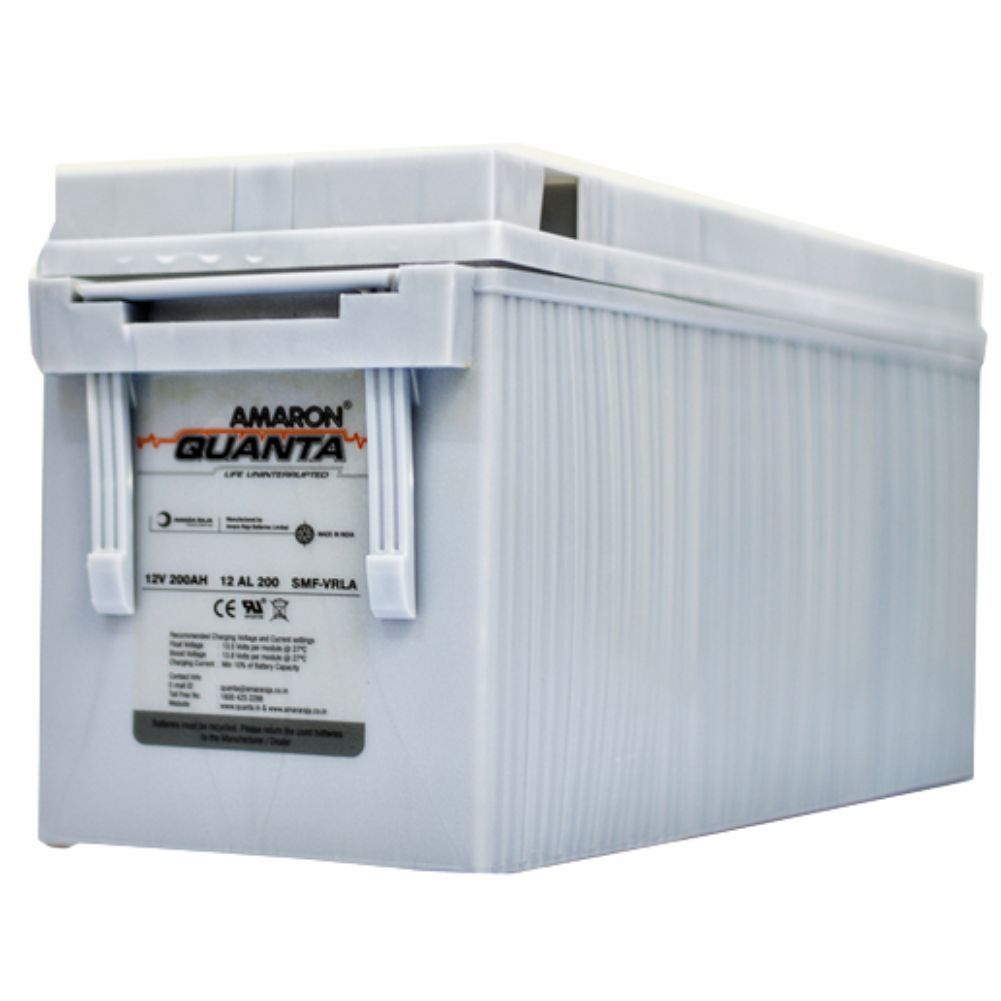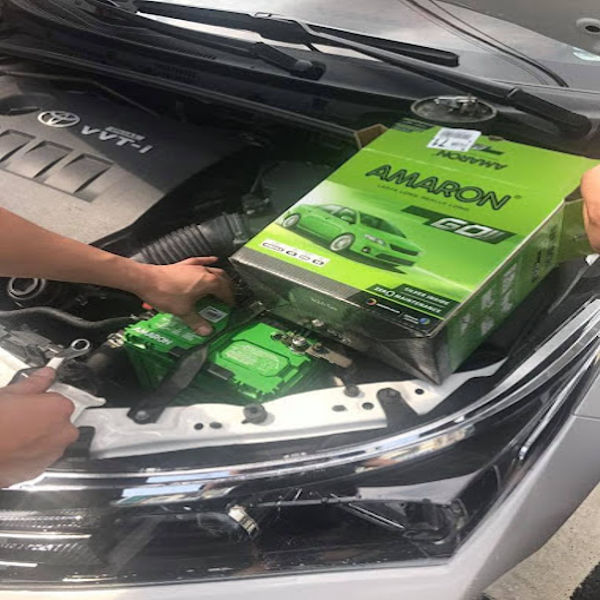The Amaron Quanta 12V 7Ah is a sealed lead-acid (SLA) battery commonly used in applications such as backup power systems, uninterruptible power supplies (UPS), security systems, and various other low-power applications. Here\'s a breakdown of its details: Key Specifications: Nominal Voltage: 12 Volts (V) Capacity: 7 Ampere-hours (Ah) at a rate of 20 hours (i.e., the battery can provide 0.35A of current for 20 hours). This is typical for deep-cycle applications, providing reliable performance over an extended period. Battery Type: Sealed Lead-Acid (SLA): Maintenance-free design. Can be installed in any orientation, though upright is recommended for optimal performance. Suitable for both float and cyclic applications. Dimensions: Length: 151 mm (5.94 inches) Width: 65 mm (2.56 inches) Height: 95 mm (3.74 inches) Weight: Approx. 2.3 kg (5.07 lbs) Terminal Type: F1 Faston connectors (0.187” wide), which are commonly used for quick connections. Operating Temperature: Discharge: -15°C to +50°C (5°F to 122°F) Charge: 0°C to +40°C (32°F to 104°F) Float Life: Typically 3-5 years in float (backup power) applications. Self-Discharge: SLA batteries typically have a low self-discharge rate of about 3-5% per month at 25°C, meaning they retain their charge relatively well when not in use for extended periods. Charge Voltage: Standard Charging Voltage: 13.5 to 13.8V (constant voltage charging) Maximum Charging Voltage: 14.4V Recommended Float Charging Voltage: 13.5V Cycle Life: Typically offers about 200-300 cycles at 100% discharge. The cycle life increases with lower depth of discharge (DoD). Applications: UPS Systems: To provide backup power for computers, networking equipment, and other devices. Solar Power Systems: As a small energy storage option in off-grid or backup solar systems. Alarm Systems: For providing power in case of a mains failure. Electric Vehicles & Mobility Scooters: In some cases for small EVs or battery-powered mobility solutions. Power Tools & Other Low Power Systems: To provide compact, reliable energy for tools and other devices. Safety & Maintenance: Maintenance-Free: No need to add water or maintain the electrolyte levels, as the battery is sealed. Overcharge Protection: Built-in mechanisms to prevent overcharging that could lead to damage or overheating. Overcurrent Protection: Built-in to prevent damage due to short circuits or excessive current. Warranty: Typically 1-2 years depending on the brand and country of purchase. Storage & Handling: Storage Temperature: Store in a cool, dry place, ideally between 15°C and 25°C. Do not store in a fully discharged state, as this can significantly reduce the lifespan of the battery. Regular Maintenance: If not in use for extended periods, check the battery voltage periodically and recharge it if necessary. The Amaron Quanta 12V 7Ah battery is designed for reliability and versatility, suitable for a variety of applications that require backup power or a small energy storage solution.
Send Message







